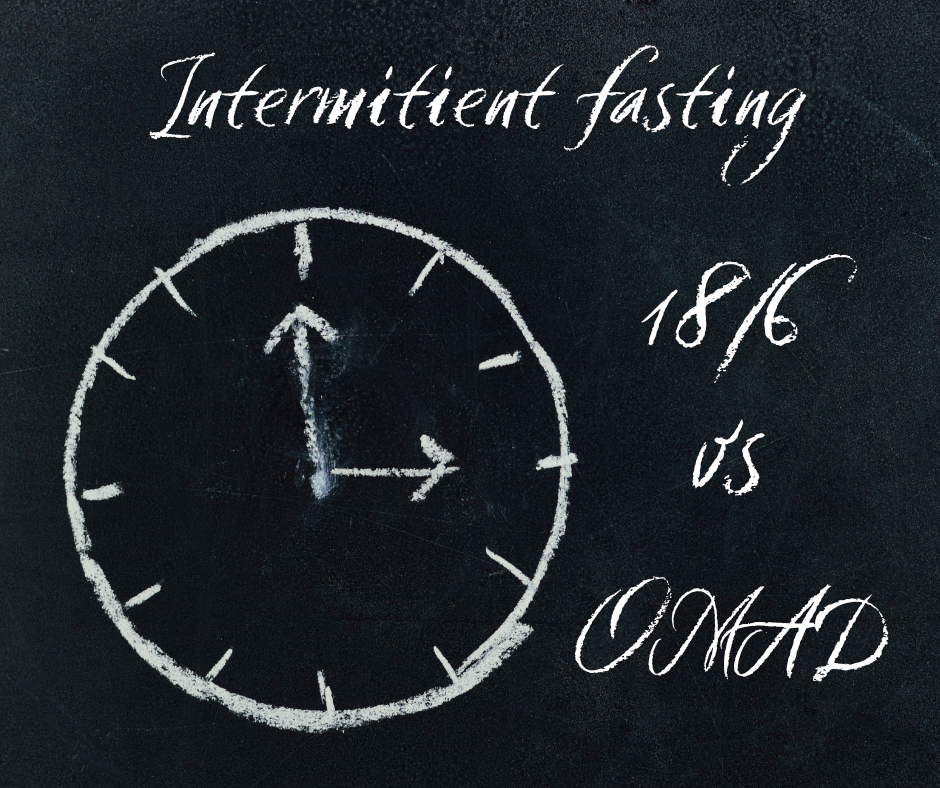18/6 vs OMAD – Exploring Two Intermittent Fasting Methods
Intermittent fasting has gained popularity for its potential health benefits, including weight management and metabolic improvements. Two commonly practiced fasting regimens are 18/6 and OMAD (One Meal A Day), each with its own unique approach to fasting and eating windows. In this article, we’ll dive deep into the pros and cons of 18/6 vs OMAD , providing you with a comprehensive comparison to help you make an informed decision about which fasting method suits your lifestyle and health goals.

18/6 Fasting:
Pros:
- Flexible Eating Window: The 18/6 fasting method offers an 6-hour eating window within a 24-hour day, making it relatively flexible. This flexibility allows individuals to plan their meals and snacks more comfortably, making it suitable for a variety of lifestyles.
- Ease of Adherence: The 18/6 fasting pattern is easier for many people to adopt and adhere to, as it is less restrictive in terms of meal timing and duration.
- Nutritional Adequacy: With 18/6, you have a more extended period to distribute your daily nutrients and calories, making it easier to meet your nutritional needs.
- Weight Management: Due to its relatively straightforward approach, 18/6 can be effective for weight management and appetite control by restricting eating to an 6-hour window.
Cons:
- Moderate Fasting Period: Some individuals seeking more profound fasting benefits might find the 16-hour fasting duration less impactful compared to more extended fasts like OMAD.
- Caloric Control: While 18/6 can help with portion control, it doesn’t guarantee a caloric deficit, which is necessary for weight loss.
OMAD (One Meal A Day):
Pros:
- Extended Fasting Benefits: OMAD provides an extended fasting period of 23 hours, which may lead to more pronounced benefits associated with fasting, such as increased autophagy and ketosis.
- Simplified Eating: OMAD simplifies meal planning and decision-making by limiting eating to a single, substantial meal, which can be convenient for some individuals.
- Caloric Restriction: By consuming all daily calories in one meal, OMAD naturally enforces a caloric deficit, making it suitable for weight loss.
Cons:
- Limited Eating Window: The 1-hour eating window in OMAD can be socially challenging and inflexible for some individuals. It may not be suitable for those with busy schedules or frequent social engagements around mealtime.
- Nutritional Planning: OMAD requires meticulous nutritional planning to ensure that all essential nutrients are consumed in a single meal. It can be difficult to meet daily nutritional needs.
- Adherence: Due to its extreme nature, OMAD can be challenging to adhere to for many people, leading to potential irregularities in practice.
In conclusion, the choice between 18/6 and OMAD depends on your individual preferences, lifestyle, and health goals. While both methods offer potential benefits, 18/6 is more flexible and easier to integrate into daily life. OMAD, on the other hand, provides a more prolonged fasting period and natural caloric restriction, making it suitable for weight loss. However, it is less flexible and may require careful meal planning.
Consulting with a healthcare professional or dietitian is essential before starting any fasting regimen to ensure it aligns with your health and dietary needs. Ultimately, the right fasting method is one that you can sustain in the long term and that supports your overall well-being.








